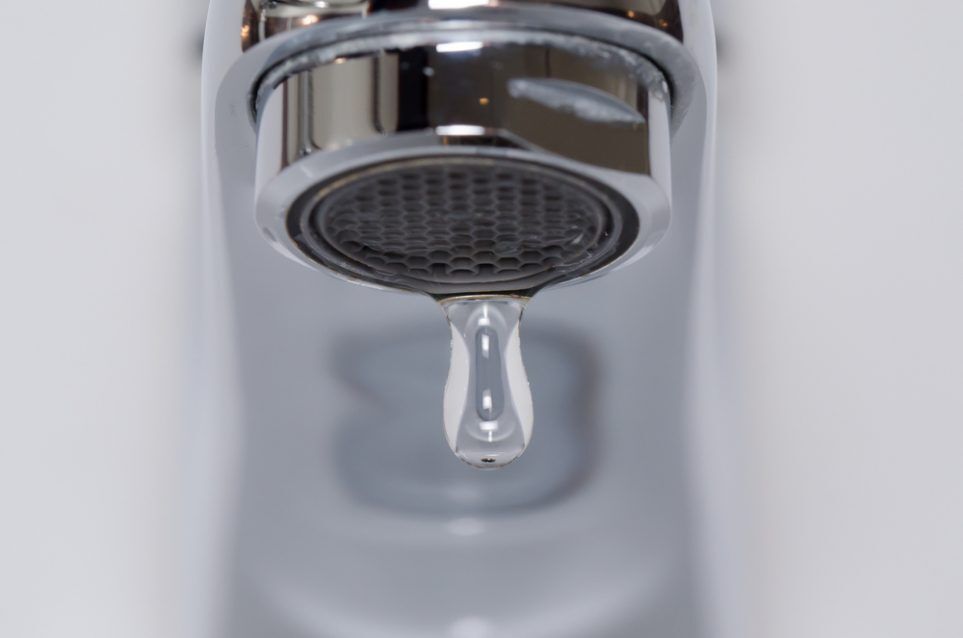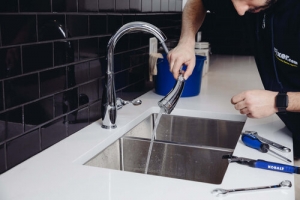What It's Important to Fix a Faulty Faucet
What It's Important to Fix a Faulty Faucet
Blog Article
What're your ideas regarding Leaky Faucets: Why They Happen & What to Do About Them?

Leaking taps might look like a minor inconvenience, yet their effect surpasses just the aggravation of the sound. From wasting water to sustaining unnecessary monetary expenses and health risks, neglecting a dripping tap can cause various effects. In this write-up, we'll delve into why it's essential to address this usual home concern promptly and successfully.
Wastage of Water
Ecological Effect
Trickling faucets contribute significantly to water waste. According to the Environmental Protection Agency (EPA), a single faucet dripping at one drip per secondly can throw away greater than 3,000 gallons of water each year. This not only stress water sources but additionally influences communities and wild animals depending on them.
Step-by-Step Guide to Repairing a Dripping Faucet
Devices Needed
Prior to attempting to take care of a dripping tap, gather the necessary devices, including a flexible wrench, screwdrivers, replacement components (such as washers or cartridges), and plumber's tape.
Common Tap Issues and Their Solutions
Recognize the type of tap and the specific concern triggering the drip. Usual problems consist of damaged washing machines, rusty valve seats, or malfunctioning O-rings. Refer to producer guidelines or on-line tutorials for step-by-step guidance on repair work.
Financial Prices
Raised Water Costs
Past the environmental impact, dripping faucets can inflate water costs substantially. The built up waste gradually equates into greater utility expenses, which can have been prevented with timely repair services.
Prospective Residential Or Commercial Property Damages
In addition, extended trickling can cause harm to components and surface areas bordering the tap. Water build-up can trigger staining, rust, and even structural concerns if left neglected, leading to extra repair work costs.
Wellness Problems
Mold and Mildew Development
The continuous presence of dampness from a leaking faucet develops a suitable environment for mold and mold growth. These fungi not only compromise indoor air top quality however additionally present health and wellness dangers, especially for individuals with respiratory problems or allergies.
Waterborne Illness
Stationary water in dripping faucets can come to be a breeding ground for microorganisms and various other microorganisms, raising the threat of waterborne conditions. Pollutants such as Legionella bacteria flourish in stationary water, potentially resulting in major diseases when ingested or breathed in.
Do it yourself vs. Expert Repair
Pros and Cons of Do It Yourself Repair
While some may attempt to take care of a trickling faucet themselves, do it yourself repair work include their very own collection of obstacles. Without correct understanding and devices, DIY efforts can exacerbate the problem or bring about insufficient repair work, lengthening the issue.
Benefits of Employing an Expert Plumber
Working with a professional plumber ensures that the underlying root cause of the leaking faucet is resolved successfully. Plumbers possess the experience and equipment to identify and repair faucet issues effectively, conserving time and decreasing the risk of additional damage.
Ecological Responsibility
Specific Contribution to Conservation
Taking obligation for taking care of leaking faucets lines up with wider efforts toward water conservation and environmental sustainability. Every person's actions jointly make a significant impact on protecting valuable resources.
Sustainable Living Practices
By focusing on punctual repair services and embracing water-saving habits, people add to sustainable living practices that profit both existing and future generations.
Safety nets
Routine Maintenance Tips
To avoid dripping faucets, carry out regular maintenance such as cleansing aerators, examining for leakages, and changing worn-out components immediately. Additionally, take into consideration setting up water-saving devices or updating to a lot more reliable fixtures.
Relevance of Prompt Services
Attending to trickling taps as quickly as they're seen protects against further water waste and prospective damage, ultimately saving both water and cash in the long run.
Impact on Property Worth
Assumption of Well-Maintained Residential Or Commercial Property
Preserving a home in good condition, including addressing maintenance concerns like leaking taps, boosts its perceived value and worth among potential customers or tenants.
Impact on Resale Worth
Properties with properly maintained plumbing components, consisting of taps, command greater resale values in the real estate market. Addressing trickling faucets can contribute to a favorable perception during residential property evaluations and arrangements.
Verdict
Addressing a leaking faucet goes beyond mere comfort; it's a necessary action toward conserving water, lowering economic prices, and guarding wellness and property. Whether via do it yourself repairs or professional assistance, doing something about it to fix trickling taps is a small yet impactful means to promote responsible stewardship of resources and contribute to a much healthier, much more sustainable future.
Most Common Reasons for a Leaky Faucet and How to Stop the Drip
Whether it’s your kitchen faucet leaking or a bathroom faucet leaking, one leaky faucet can waste anywhere from three to 30 gallons of water every single day. If the constant drip-drip-drip doesn’t get your attention, your water bill will. The good news is that, by following a few simple steps, chances are pretty good you can fix the problem yourself.
Why is it dripping?
Before you start taking things apart, let’s break down some of the most common causes of a leaky faucet.
Bad O-ring.
A cartridge is a valve that controls the flow of water into the faucet spout. On cartridge faucets there’s an O-ring—the little disc attached to the stem screw that holds the faucet handle in place. If it’s loose or worn-out, it can cause your sink handle to leak. Of course, the cartridge itself could be worn out. If that’s the case, make sure you replace it with the exact same kind.
Corroded valve seat.
The valve seat connects the faucet and the spout. If the leak seems to be coming from the spout, it might be because a buildup of water sediment has corroded the valve seat.
Worn-out washers or seals.
A leaky spout could be caused by a bad washer that rests against the valve seat. It’s just a matter of time before friction takes its toll. It could also be the wrong size washer or one that’s been installed incorrectly. Water sediments can also corrode inlet and outlet seals.
Water pressure.
If the faucet only drips now and then, or when you turn the handles a certain way, you should probably check your home’s water pressure.
Loose or broken parts.
The adjusting ring and packing nuts in the stream screw can become loose over time, causing your sink handle to leak. Try tightening or replacing the packing nut. If the leak is coming from the pipes underneath the sink, you probably have a broken pipe or fitting. If that’s the case, you should definitely call a plumber.
Know your faucet.
Faucets come in a variety of types. Each one has its own assembly—and its own possible causes of leaks. Learning about the four most common kinds of faucets will help you know how to take them apart and make any repairs.
How to stop a leaky faucet
Fixing that leaky faucet doesn’t have to take a lot of time, money, or expertise. It’s usually a simple matter of replacing a worn-out washer or gasket, a loose O ring, or another part. Chances are really good you can do this yourself if you follow these simple steps.
Shut off the water.
Before you tackle the faucet, cut off the water supply to the sink. There should be one valve for hot and one for cold. Hand-turn them clockwise with your hands till they close. If there are no valves under the sink, head to the basement and shut off the main water supply to the house. Then turn on the faucet until it empties out the water that’s still in the line and you’re ready to start. It’s a good idea to cover the sink drain with a plug or a rag so you don’t lose any small pieces and parts while you’re working.

We hope you liked our post about . Thank you so much for finding the time to read through our short article. Enjoyed our posting? Please quickly share it. Help others find it. Thanks so much for your time spent reading it.
Report this page